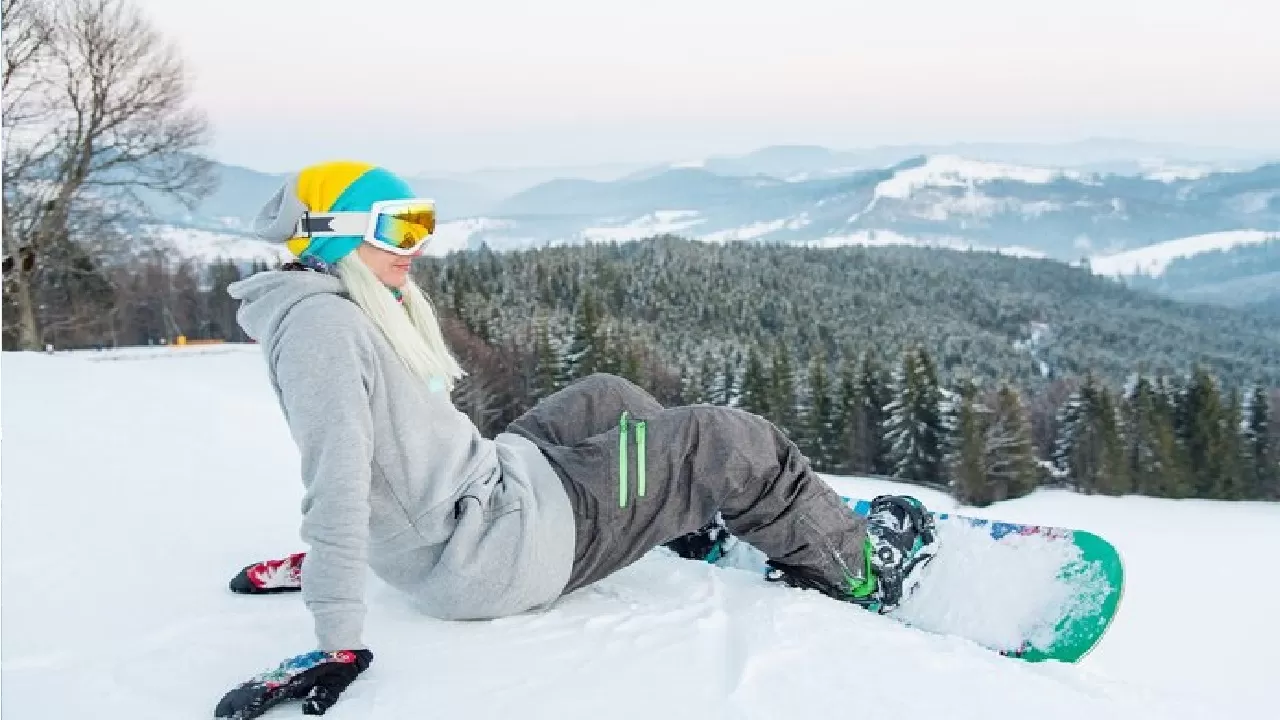Skiing is one of the activities that combine both adrenaline and fun during winter vacations. However, the way to have a successful experience in skiing is not only through techniques but also through the right clothing. For first-time skiers, proper clothing is critical for both safety and comfort. A layered dressing system, waterproof materials and appropriate accessories make the time spent on the mountain enjoyable.
The Importance of Layering When Skiing
During skiing, the body warms up due to intense physical activity but can quickly become cold with cold air and wind. This is why the layered dressing method is used. Layered clothing consists of three basic stages: inner layer, middle layer and outer layer.
- The inner layer wicks sweat away from the skin to keep it dry.
- The middle layer retains body heat and insulates from the cold.
- The outer layer provides protection against water and wind.
The advantage of layering is the flexibility to add or remove clothing according to weather conditions. This prevents both chilling and excessive sweating.
Thermal Underwear and Inner Layer Selection
Thermal underwear is the first item to be considered when skiing. Underwear made of special thermal fabrics should be preferred instead of cotton clothes. Because cotton traps sweat and cools the body. However, thermal underwear expels moisture and keeps the body warm.
The underwear should fit snugly to the body and not restrict mobility. Both upper and lower thermal underwear should be used. It is also important to choose special socks when skiing; thin but warm technical socks provide comfort in the boot.
Mid Layer: Fleece and Softshell Alternatives
The middle layer worn over the underwear retains body heat. The most preferred garments in this layer are fleece and softshell products. Fleece provides warmth with its lightweight structure, while softshell is resistant to wind and offers flexible movement.
Fleece is usually sufficient for beginner skiers. For those who want a more professional experience, softshell products can be preferred. This layer helps you maintain your energy during skiing and keeps the body balanced in cold weather.
Outer Layer: Waterproof Coat and Pants Choice
The outer layer is one of the most important elements of protection during skiing. Outer garments that come into direct contact with snow, wind and moisture must be waterproof and breathable.
- Thanks to special membrane technologies, ski jackets are both waterproof and trap the heat inside.
- With their flexible structure, ski pants prevent water from entering in case of falling or sitting.
Coats should have details such as snow skirts, zippered ventilation channels and adjustable hoods. For trousers, an elasticized design compatible with boots should be preferred.
Foot Comfort with Ski Socks and Boots
The feet are the most stressed areas during skiing. It is therefore essential to use special ski socks and ski boots.
- Ski socks do not cause discomfort in the boot with their thin but warm structure. Technical socks made of wool or synthetic materials should be preferred instead of cotton socks.
- Ski boots should fit snugly on the foot, neither too tight nor too loose. The lacing systems of the boots are critical for both safety and performance.
Choosing the right socks and boots ensures long hours of comfort on the track and prevents cold feet or blisters.
Use of Gloves, Beanie and Neck Collar
Hands, head and neck are the parts of the body that lose heat the fastest while skiing. Therefore, using the right accessories is critical for a comfortable experience.
- Gloves should be both waterproof and thermally insulated. Ski gloves that allow the fingers to move independently of each other should also have long cuffs that protect the wrist.
- A beanie protects the heat of the head, but it should fit under the helmet and be thin. Thick beanies may prevent the helmet from fitting comfortably.
- Lanyards provide protection against cold wind and snow. Made of fleece or thermal fabric, they are both breathable and comfortable.
These accessories provide both protection from the cold and a safe way to play sports.
Choosing Ski Goggles and Helmet
Goggles and helmets during skiing are not only accessories but also safety equipment.
- Ski goggles protect against UV rays and increase visibility. Even in foggy weather, special lenses make it possible to see clearly. They also protect the eyes against wind and snow crystals.
- A helmet protects the head in case of a fall and prevents serious injuries. CE or ASTM certified products should be preferred when choosing a helmet. In addition, if the inner pads of the helmet are removable and washable, it provides an advantage in terms of hygiene.
Choosing the right helmet and goggles maximizes safety on the track.
Sun Protection: Beware of UV Rays in Winter
The snow surface reflects up to 80% of the sun’s rays. This makes sun protection essential when skiing. Although many people think that the sun’s effect decreases in winter, mountainous areas have high UV levels.
- Sunscreen must be used. High factor creams (SPF 30 and above) should be applied on the face and lips.
- Eyeglass lenses must have UV filters.
- Sunscreen lip balm minimizes the damage of the sun combined with cold and wind.
Thus, burns, drying and cracking of the skin are prevented.
Points to Consider in Ski Wear for Children
Children’s body temperature balance changes faster than adults. For this reason, extra care should be taken when choosing children’s clothes while skiing.
- The layered dressing system should also apply to children.
- Clothing should be waterproof and breathable.
- Gloves, berets and helmets must be worn.
- Ski suits specially designed for children provide freedom of movement with their flexible structure.
Choosing the right clothing allows children to have a pleasant time without getting cold and tired. The use of goggles also protects the eyes from both sunlight and snow glare.
Combining Comfort and Safety in Ski Clothing
The most important point in choosing ski clothing is to balance comfort and safety. Comfortable clothing makes it easier to spend a long time on the slopes. Safety helmets, goggles and protective equipment minimize the effects of possible accidents.
- Breathable fabrics prevent perspiration, while waterproof materials keep you dry.
- Flexible designs increase mobility.
- Safety-oriented accessories make sports more comfortable and risk-free.
The right choice of clothing and accessories makes skiing not only enjoyable, but also a safe experience.

